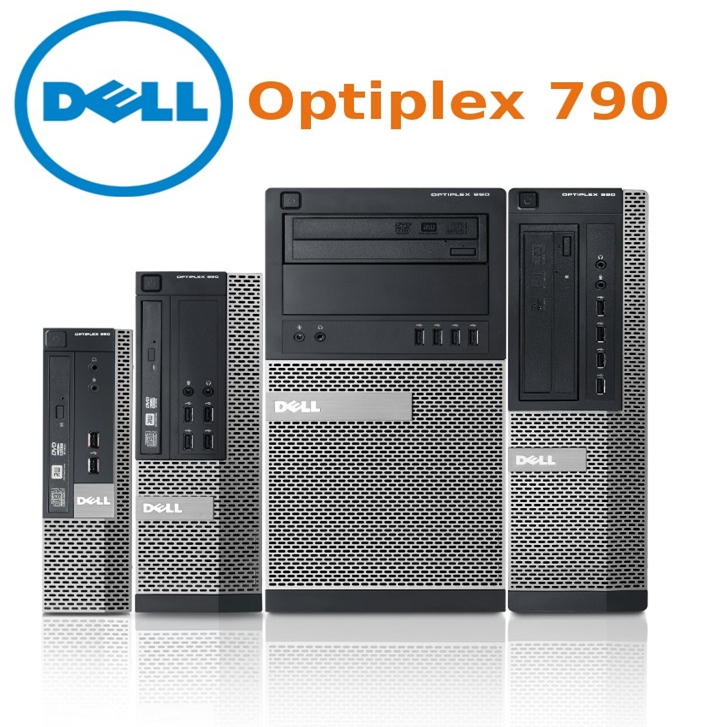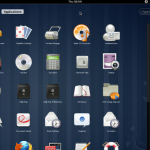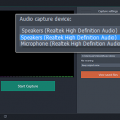Dell’s OptiPlex 790 desktop system is the successor to its 780 model and is refreshed with Intel’s second generation Core i5 processor.
OptiPlex is Dell’s desktop business brand. The new range includes the OptiPlex FX130 and FX170 thin clients, the budget 390 desktop, the 590 and the 790 desktops aimed at smaller businesses, and the 990 enterprise system.
We looked at the OptiPlex 790 mini-tower (MT) version, which was launched in March.
There are three other chassis options: a standard desktop (DT), a small form factor (SFF) model and an ultra-small form factor (USFF) system
Specifications
Our Dell OptiPlex 790 had an Intel Core i5-2400 3.1GHz processor running under the 32-bit version of Windows 7 Professional.
There are four dual in-line memory slots on the 790. We had 4GB of dual-channel 1333MHz DDR3 system memory installed in two of the slots using 2GB DIMMs.
Display graphics are provided by Intel’s HD Graphics 2000 system, which is integrated into the Core i5 processor, and gives a maximum resolution of 1920 x 1200 in 32-bit colour.
However, the graphics system does share 1364MB (1.36GB) of system memory, which means that the amount of memory available to the operating system drops to 2.64GB.
Users wanting discrete graphics for better multimedia performance can order their systems with AMD Radeon HD6420 or AMD Radeon HD6350 graphics cards installed, although Dell says “almost any card can be fitted and tested via Dell’s Customer Factory Integration process.”
The 790 MT weighs 8.9kg (19.6lbs), has dimensions of 275 x 192 x 16.2mm, and is clothed in standard Dell business black, with the Dell standard aluminium grill covering the front lower half of the system, behind which is the processor fan and the SATA hard disk drive bays.
There are two internal 3.5-inch bays and two external 5.25-inch bays, and four full height PCI expansion slots (3 x PCIe, 1 x standard PCI).
The optical drive is an internal Toshiba Samsung Storage Technology (TSST) DVD/RW TS-H653J model, and the internal hard drive is a 7,200 rpm spin speed 500GB Seagate Barracuda model.
There are two partitions on the drive, one for the operating system (OS) and a recovery partition allowing users to revert back to the factory installed OS image.
Ports
There are 10 external USB 2.0 ports (four on the front and six on the back), and a single internal USB port. There’s also a serial port, two PS/2, standard VGA, and also a DisplayPort connection on the back of the system [see picture].

There are two line-in audio jacks for stereo and microphone connections, and two line-out jacks for headphone and speaker connections, with audio functionality provided by a RealTek ALC 269 system.
IT administrators maybe surprised that old serial and PS/2 ports are still being shipped on desktop systems today, especially since the 790 has 10 USB 2.0 ports.
When we queried this with Dell, it said: “Both PS/2 and serial are still being required and demanded by OptiPlex customers, in security, medical, engineering and banking sectors.”
Customers can also have the optional USB 3.0 PCIe card installed – our 790 had a USB 3.0 card present.
For transferring data locally or imaging systems, we think the USB 3.0 card could save a lot of time since the performance increase over the standard USB 2.0 ports can be up to 10 times, based on our previous USB 2.0/3.0 testing.
There are no media card (SD, SDHC or microSD) slots as standard.
As with most desktop systems there is only one network connection, an integrated Intel 82579LM Ethernet LAN 10/100/1000Mbit/s model, although there are optional wireless connections available.
In use
We had no problems with the 790 MT throughout the test period. If it behaves like our existing labs test OptiPlex 980, which has performed without a hitch for the past six months, users won’t be bothered by hardware problems.
Accessing the inside of 790 was very easy. All we had to do to get into the system was to turn a lever on the side of the system to release the side panel.
Internally, the system looked slightly disorganised, although cables and wires didn’t snag anything, and there was easy access to processor, system memory and other components [see picture].
 We easily clipped in a PCi card in seconds; similarly putting in a second hard drive took less than a minute. The latch holding the optical drive also allows easy replacement or upgrading.
We easily clipped in a PCi card in seconds; similarly putting in a second hard drive took less than a minute. The latch holding the optical drive also allows easy replacement or upgrading.
Applications and BIOS options
Since these are business systems there are few, if any, applications pre-installed besides management and backup applications provided by Dell because firms will want to install their own system image populated with their own applications.
The applications on our 790 sample were all starter editions: standard DVD player software, CyberLink DVD 9.5, Microsoft Office 2010 Starter, and the Roxio Creator Standard media creation package.
The main Dell management application is the Dell Backup and Recovery Manager, for making OS image backups and bootable recovery optical media.
Intel’s Management and Security application is also installed, for use with Intel’s Anti-Theft technology, which according to Dell “may detect a theft situation and can prevent the OS from booting, even if the OS is re-installed.”
The Backup and Recovery Manager was easy to use [see picture].

This application is quicker to use to local storage if USB 3.0 ports are available because of USB 3.0’s data transfer performance advantage over USB 2.0.
One feature missing on the 790 is the Intel vPro system for managing and securing desktops and their data. Dell says that it has repositioned vPro as a premium option, so consequently it’s not supported on the 790.
By hitting the F12 key when the 790 boots up, you can get into the pre-boot environment and select which devices you want the system to boot from (optical drive or hard disk), and also get access to the BIOS settings and Dell’s pre-boot system assessment (ePAS) diagnostics.
The ePAS diagnostics give information on system components and also allow system diagnostic tests of, for example, the processor, system memory, and the motherboard and processor fans.
The BIOS options on the 790 are comprehensive, allowing settings for system configuration to be changed. Users can disable all USB ports or just individual ones. There are also BIOS options dealing with power management and to enhance CPU performance.
BIOS Security options
A subset of the BIOS options are the ones related to security, and these also allow a comprehensive set of security options to be configured.
Aside from the standard administrator password, which when set stops access to the BIOS options, there are security options to enable the chassis intrusion detection system, and also to make sure any firmware updates to the BIOS are digitally signed, which would stop BIOS malware being applied to the system.
Another BIOS option is to enable CompuTrace, a software system from Absolute Software that allows IT administrators to identify computers that have gone missing or are at risk of suspicious behaviour towards them.
Operating system image
For businesses, operating image stability is critical, since changes could adversly impact firms if they have to re-image systems every couple of months.
Dell says the image lifecycle (time that the OS image remains constant) on the OptiPlex is a 15 month commitment “with zero or minimum image impact”.
The images are also globally available (language-wise) according to Dell, and the image is fixed across all four chassis configurations (MT, DT, SFF and USFF).
Performance tests
The i5-2400 processor is non-hyperthreaded, and we found it gave better performance than earlier Core i-series hyperthreaded processors, using PassMark’s Performance Test 7 (PT7) benchmark.
Using PassMark’s PT7 benchmark we compared the new 790 against our existing Labs test OptiPlex 980 system.
The 980 has the earlier generation Core i5 660 processor which is dual-core and gives four cores using hyperthreading. We recorded a 43 per cent increase in processor performance for the 790 compared to the 980 [see picture].

USB 3.0 performance
We checked the performance of the USB 3.0 PCIe card, and its performance advantages over the onboard USB 2.0 ports. To do this we measured sequential read/write performance using Kingston’s HyperX Max 64GB flash storage device connected to both the 790’s USB 2.0 and USB 3.0 ports.
Using Atto Technologies disk benchmark we found sequential read/write speeds about 6x faster on reads and 7x faster on writes when the HyperX Max was connected to USB 3.0 ports compared with USB 2.0.
Absolute speeds on USB 3.0 were 196MB/s when reading sequentially, and 174MB/s when writing sequentially with the HyperX Max. With USB 2.0 absolute speeds were 32MB/s when reading sequentially and 24MB/s when writing sequentially.
This means that system adminstrators deploying the OptiPlex 790 and applying a standard image to the system, will see time savings. Users will be able to save data more quickly locally using the USB 3.0 ports.
Conclusions
A good business system, which should be easy for IT administrators to secure through the comprehensive BIOS options, although some like CompuTrace have cost associated with them.
The performance of the latest Intel Core i-series processors gives a significant performance increase over the OptiPlex 780 system it supercedes.
We think the optional USB 3.0 PCIe USB 3.0 card would be a good investment for the future, since it has 10 x the data transfer speed of USB 2.0 ports, it would for example aid system imaging/re-imaging by system administrators by taking a tenth of the time to image/re-image systems.
Source: Computing.co.uk




























No Comments
Leave a comment Cancel